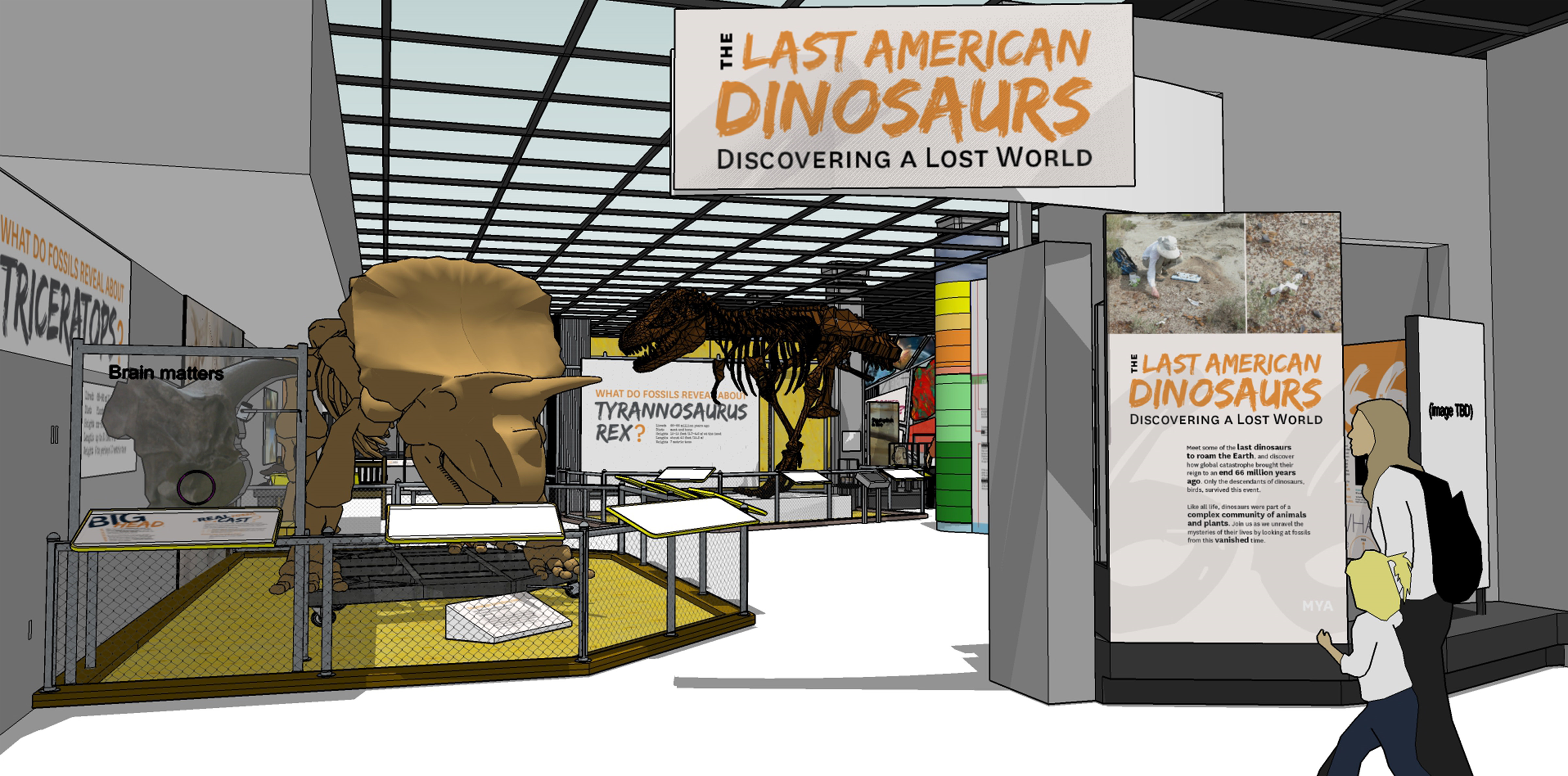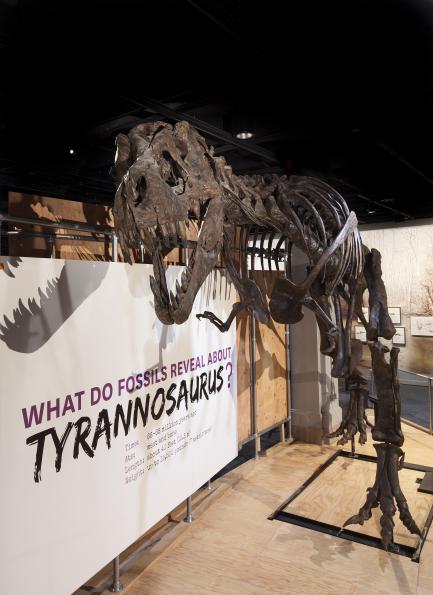Smithsonian’s National Museum of Natural History Tells Story of “The Last American Dinosaurs” in New Exhibition
Two enormous dinosaurs—Triceratops and Tyrannosaurus rex—reign over the National Museum of Natural History’s new exhibition: “The Last American Dinosaurs: Discovering a Lost World.” The 5,200-square-foot exhibition opens Nov. 25 on the second floor of the museum. It tells the story of non-avian dinosaurs’ final years in western North America through an extraordinary diversity of animals and plants discovered in the fossil-rich layers of the Hell Creek Formation in North Dakota, South Dakota and Montana. The exhibition will remain on view until the completion of the museum’s newly renovated dinosaur and fossil hall, scheduled for opening in 2019.
“This exhibition gives visitors a chance to explore the world in which dinosaurs lived between 66 and 68 million years ago, just before an enormous asteroid impact suddenly altered life on our planet forever,” said Hans-Dieter Sues, curator of vertebrate paleontology and lead curator of the exhibition. “Examining long-gone ecosystems helps scientists understand how the world is changing today and what the consequences of a mass extinction could be in the future.”
Media: For video file, contact Kathryn Sabella at sabellak@si.edu
Set in North America’s western interior, “Last American Dinosaurs” reveals what life was like for dinosaurs and other animals thriving during the Late Cretaceous Period. It features “Hatcher,” a giant, plant-eating Triceratops, and the museum’s nearly 14-foot-tall cast of a T. rex known as “Stan,” two of the most imposing dinosaurs in the museum’s collections. The skulls of an adult Edmontosaurus and an infant and yearling Triceratops also highlight the show, along with other fossil displays, murals of ancient environments, a video presentation showing behind-the-scene collaborations between scientists and paleo-artists working on the exhibit and an arcade-style game, “How to Become a Fossil.” The murals give visitors a window into the past and feature plants and animals from the lush, diverse Hell Creek ecosystem.
The new FossiLab will also be open for guests to watch staff and volunteers prepare and conserve fossils. A “Fresh from the Field” display showcases recent fossil finds and gives visitors an inside look at the field of paleontology and the exciting process of investigating traces of ancient life.
At one end of the “Last American Dinosaurs” exhibition, visitors also will see artist renderings and in-progress photos of the new, much bigger dinosaur and fossil hall that will open in 2019 as it is designed and created over the next few years. The museum’s previous dinosaur and fossil hall closed April 27 in preparation for the most extensive exhibition renovation in the museum’s history. The new hall will be named in recognition of its largest supporter, David H. Koch. His gift also has helped make possible the “Last American Dinosaurs” exhibition. For more information, see the exhibition fact sheet.
# # #
SI-557-2014
Ryan Lavery
202-633-0826







